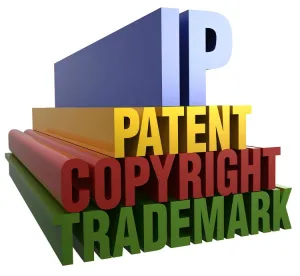Takeaway: To sustain an obviousness challenge, the petitioner must show that a skilled artisan would have had reason to combine the teachings of the prior art references to achieve the claimed invention, and that the skilled artisan would have had a reasonable expectation of success from doing so.
In its Final Written Decision, the Board determined that Petitioner had not shown by a preponderance of the evidence that claims 1-8 of the ’856 patent are unpatentable. The Board also denied Petitioner’s Motion to Exclude Evidence and granted Patent Owner’s Motion to Seal.
The Board described the ’856 patent as being related to immunoconjugates comprising an anti-ErbB antibody, such as the humanized anti-ErbB2 antibody known as HERCEPTIN® (huMAb4D5-8), linked to a maytansinoid toxin. Petitioner asserted that “pharmaceutically-acceptable carrier” should be construed as including bacteriostatic water for injection (BWFI), phosphate-buffered saline, Ringer’s solution, and dextrose solution. Patent Owner did not contest this construction. The Board adopted Petitioner’s construction. Petitioner challenged claims 1-8 as unpatentable based on Chari in view of HERCEPTIN® label further in view of Rosenblum and Pegram.
Patent Owner argued that Petitioner has not established that claims 1-8 would have been obvious over the cited art, because an ordinary artisan would not have substituted the mouse monoclonal TA.1 antibody in the immunoconjugate of Chari with the humanized mAb huMAB4D5-8. Patent Owner provided evidence, which the Board found persuasive, that in March 2000, at the time the ’856 patent was filed, prior art indicated that HERCEPTIN®-maytansinoid immunoconjugates would have been expected to exhibit unacceptable levels of antigen-dependent toxicity in normal human liver tissue in patients. Petitioner argued that the evidence is not relevant because it describes the use of a fusion protein. The Board disagreed. The Board also was persuaded by Patent Owner’s showing of unexpected results with respect to claim 8. Thus, the Board determined that Petitioner had not shown by a preponderance of the evidence that claims 1-8 would have been obvious in view of the prior art.
Petitioner sought the exclusion of certain exhibits and portions of a declaration. Patent Owner cited to those exhibits and paragraphs to support its assertion of commercial success. Petitioner alleged that they lack foundation and are inadmissible hearsay. The Board noted that even if it granted Petitioner’s Motion, it still would arrive at the same conclusion regarding the alleged obviousness of claims 1-8 of the ’856 patent. Further, the Board stated that the declarant’s testimony was direct testimony, not an out of court statement or hearsay as alleged by Petitioner. The Board also concluded that the exhibits were probative. Thus, Petitioner’s Motion was denied.
As for Patent Owner’s Motion to Seal, the Board noted that the standard for granting a motion to seal is “for good cause.” The Board stated that it did not rely on the exhibits referred to in Patent Owner’s Motion. The Board was persuaded that good cause exists to maintain the documents under seal because they contain confidential information regarding Patent Owner’s non-public marketing and sales-related proprietary information. Thus, Patent Owner’s Motion was granted.
PHIGENIX, INC. v. IMMUNOGEN, INC., IPR2014-00676
Paper 39: Final Written Decision
Dated: October 27, 2015
Patent 8,337,856
Before: Francisco C. Prats, Jacqueline Wright Bonilla, and Zhenyu Yang
Written by: Bonilla
Related Proceedings: Petitioner filed a Petition requesting inter partes review of claims 1–20 and 25–27 of U.S. Patent No. 7,575,748 (“the ’748 patent”) in Case No. IPR2014-00842. Patent Owner of the ’748 patent, Genentech, Inc., a real party-in-interest in the current proceeding, filed a Preliminary Response.



 />i
/>i

